Project Details
- Roles: Narrative Designer
- Team: Toadstools (19 people)
- Project Type: 3D Platformer for PC
- Major Tools: Unity Engine
- Time Frame: Sep. 2022 – Dec. 2023
Wild Wild Wetlands is a 3D platformer where the player takes on the role of a frog cowboy. I began the project as a narrative designer, writing dialogue for a short storyline that reinforced gameplay themes around ability growth. I also worked with the game’s custom dialogue system, modifying triggers and implementing NPCs. The game was never published, but I am happy to email a copy on request.
Responsibilities
- Developed a narrative arc to complement platforming gameplay.
- Authored documentation to communicate the team’s narrative vision.
- Coordinated with art, engineering, and sound teams to ensure the creation of story assets.
- Evaluated narrative and level engagement over 15+ playtests.
- Iterated dialogue UI in engine to ensure readability.
- Expanded a custom C# dialogue system to include additional triggers.
- Wrote 100+ lines of dialogue to guide the player and deliver emotional beats.
- Implemented 15 NPCs and their dialogue in engine using our dialogue system.
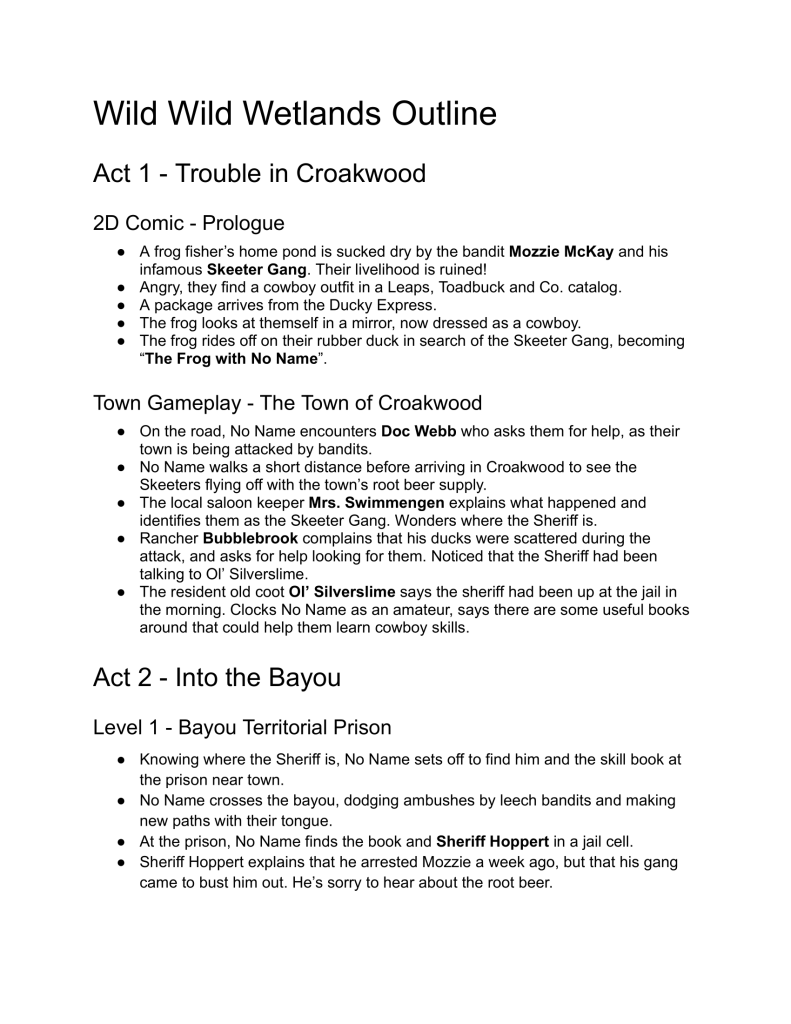
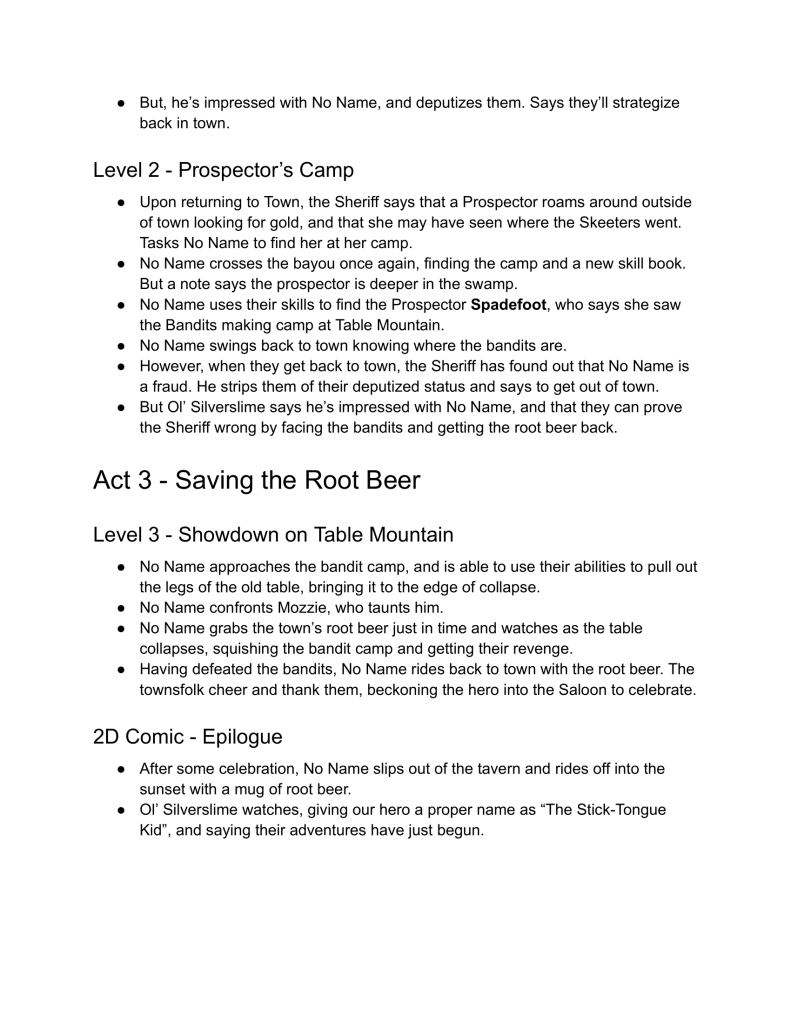
Narrative Arc
As the team’s primary narrative designer, one of my earliest tasks on Wild Wild Wetlands was to develop a narrative arc for gameplay alongside our level designers and art team. Our overall game concept quickly materialized into a lighthearted platformer centering on a frog cowboy who explored to find new abilities. Bandit enemies and a central town hub came a bit later. Working with these elements and team input, I created a three-act arc that gave additional emotional context to the gameplay, casting the player character as a wannabe cowboy who has to learn new skills and defeat the bandits. As the player navigates the game, finding and learning new abilities, the protagonist would as well.
I drew further elements from Western movie tropes, as the team was set on the game starring a cowboy. A common plotline in the genre is that of the revenge story, and I used that to motivate our character to become a cowboy. For more immediate stakes, I had the bandit enemies steal the town’s root beer. This directly involved characters from our hub town and provided a suitably goofy tragedy for the player to undo. I also tied in the different areas our level designers and artists developed, which eventually settled into a prison, a rocky area, and a table. While much of the revenge storyline did not make it into the final game due to time constraints, the overall structure stayed.
The result of this work is the attached document, the final working outline of the game’s story. I wrote the initial draft in the Fall of 2023, but it did not solidify until the final months of development. Having this central document for team members to refer to when planning helped to unify the team around a clear narrative vision. It also opened the game’s story up for team members to provide feedback and contribute their ideas, which I found strengthened the project.


Dialogue Tool
A significant portion of the work I did on the game involved working with its custom C# dialogue system, created by our excellent tools programmer Julian Jacques. The tool allowed me to save dialogue in Unity components, making it easy for me to create NPCs in engine and give them dialogue. I provided early input for what kinds of features would be needed to tell the game’s story, as well as concepting and wireframing for the dialogue UI. This concept would be developed by our art team, who turned it into the wooden sign panels of the final game. I then went and implemented these assets, iterating on details like font color and size to improve readability.
Due to changes in our team composition a year into development, I became the primary scripter for our dialogue tool, maintaining and modifying it to meet the design team’s needs. I improved dialogue triggers to ensure that the storyline remained fully sequential, and allowed dialogue to be triggered immediately upon walking up to certain NPCs in key story moments like the opening of the game. By the end of production, the system stored three different kinds of dialogue in an NPC component:
- Story Dialogue: Delivered when the player talks to the NPC as part of the main story sequence. Causes the NPC to display a yellow exclamation mark icon instead of the usual word balloon.
- Post-Story Dialogue: A single line summarizing the Story Dialogue if the player interacts with the NPC immediately after hearing it. Created because players would often click through dialogue and need a quick reminder of what was said.
- Initial Dialogue: Delivered if players talked to an NPC outside of the main story sequence. Includes gameplay information, information about the game world, or reactions to player actions in the main story. Note: the name “Initial” for this is not intuitive, but it was unfortunately used throughout my documentation.
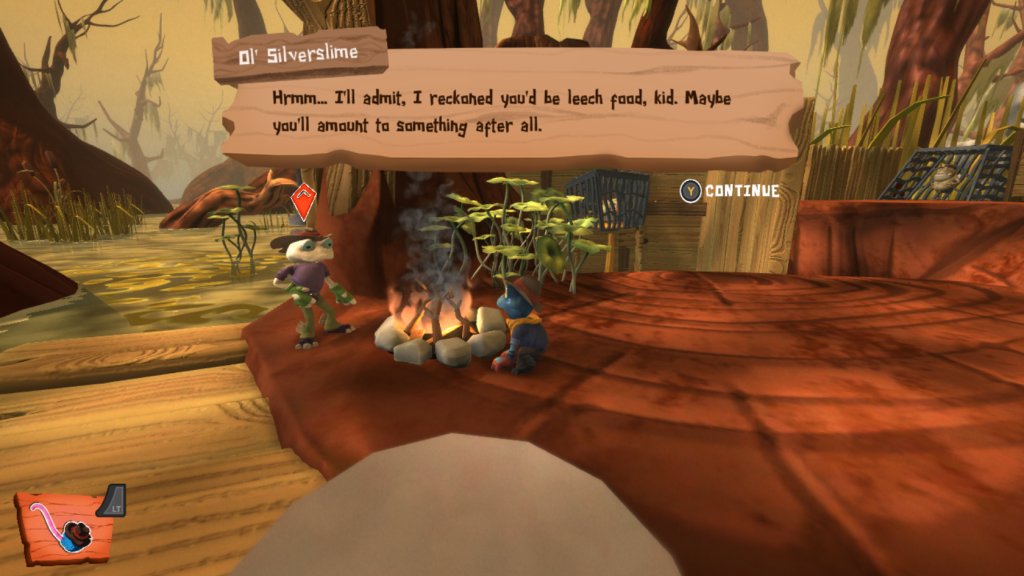
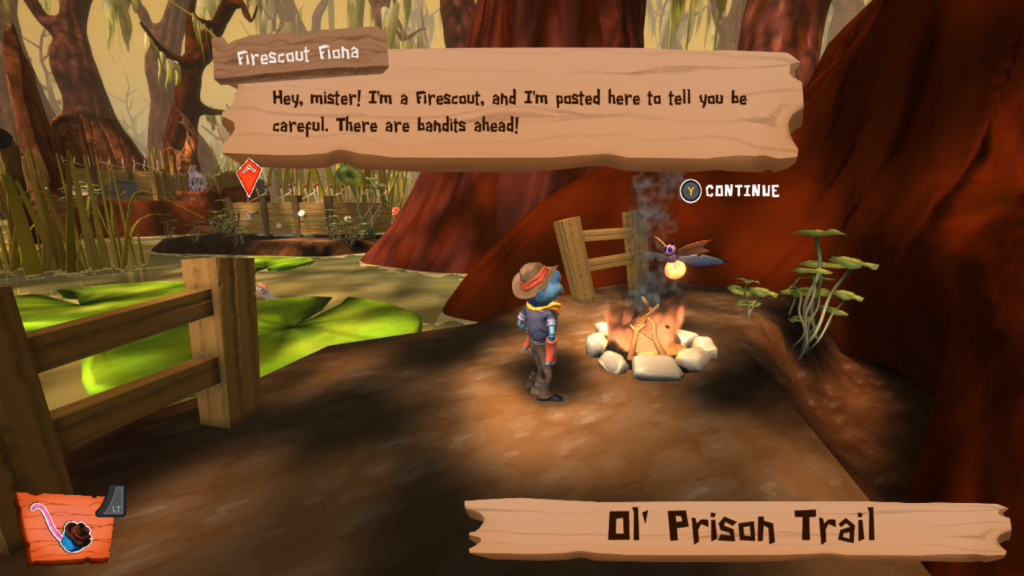
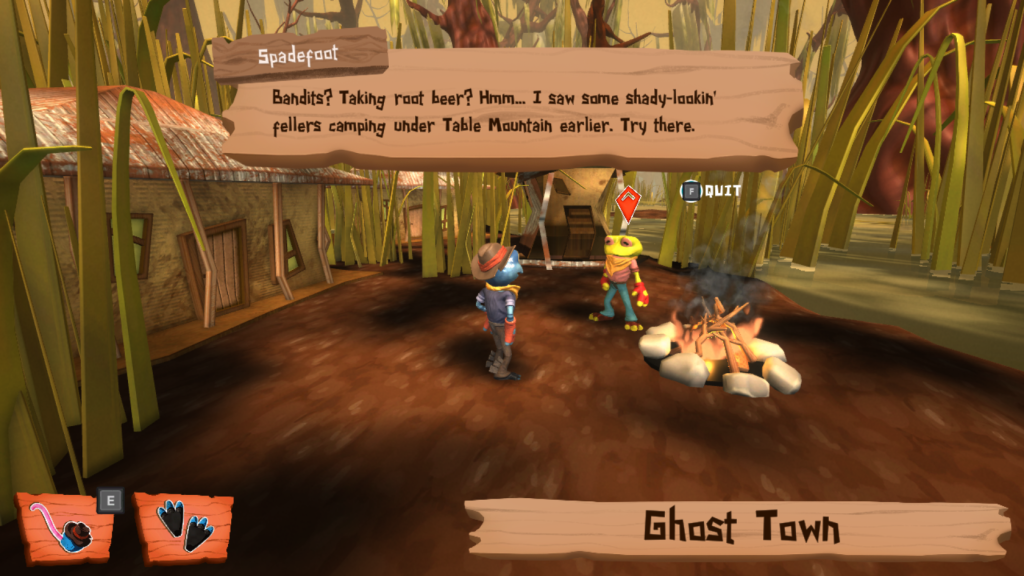
NPCs
Beats of the game’s story, as well as gameplay information like the presence of enemies, are delivered by short conversations with NPCs. Some NPCs are central to the story of the game, and are mentioned in the outline above. However, some exist to simply deliver gameplay information or give the world a little more color. These characters only have Initial Dialogue, as they are part of the storyline. Outside of town, non-story NPCs are placed by campfires, which act as checkpoints. When designing levels, we decided that since checkpoints are meant to act as a break from more skill-testing gameplay sections, it would be useful to include lower-intensity activities around the campfires. Furthermore, campfires imply someone built them and are associated with an invitation to sit and stay a while. Thus, nearly every campfire in the game has an NPC sitting by it.
All NPCs and their dialogue appear on a centralized spreadsheet that I used to collect dialogue before I implemented it in engine. The spreadsheet can be found above. The first two non-story NPCs, the deputy and the undertaker, serve as gates to levels two and three. Each gives an in-world reason the player can not go there yet and hints about the ability needed to go there. Some provide context for the area around them, like the firefly in level 1 which warns about bandit enemies up ahead. Others provide tips for finding the game’s collectibles, a set of rubber ducks, like the firefly in level 2. Others are simply colorful characters inspired by Western movie tropes, like the snake oil saleswoman in level 2. Non-story NPCs also react to the larger story, remarking on when the character returns after completing their level, and congratulating them on their successes. Dialogue changes trigger when the player gets a new movement ability.
Were I to do this project over again, I think that I would approach writing dialogue differently. A lot of it reads to me now as very clunky, and there is a lot more dialogue in the game than is necessary. While playtest feedback was positive, I found talking to NPCs slowed gameplay down a lot. I would cut down on the number of NPCs, and emphasize delivering key gameplay info over all other dialogue objectives. I would also run my dialogue through additional rounds of feedback and iteration. While I did submit my spreadsheet for review by teammates and playtest consistently, this was rarely very rigorous when it came to dialogue. A more intentional workshopping process would have resulted in better dialogue.